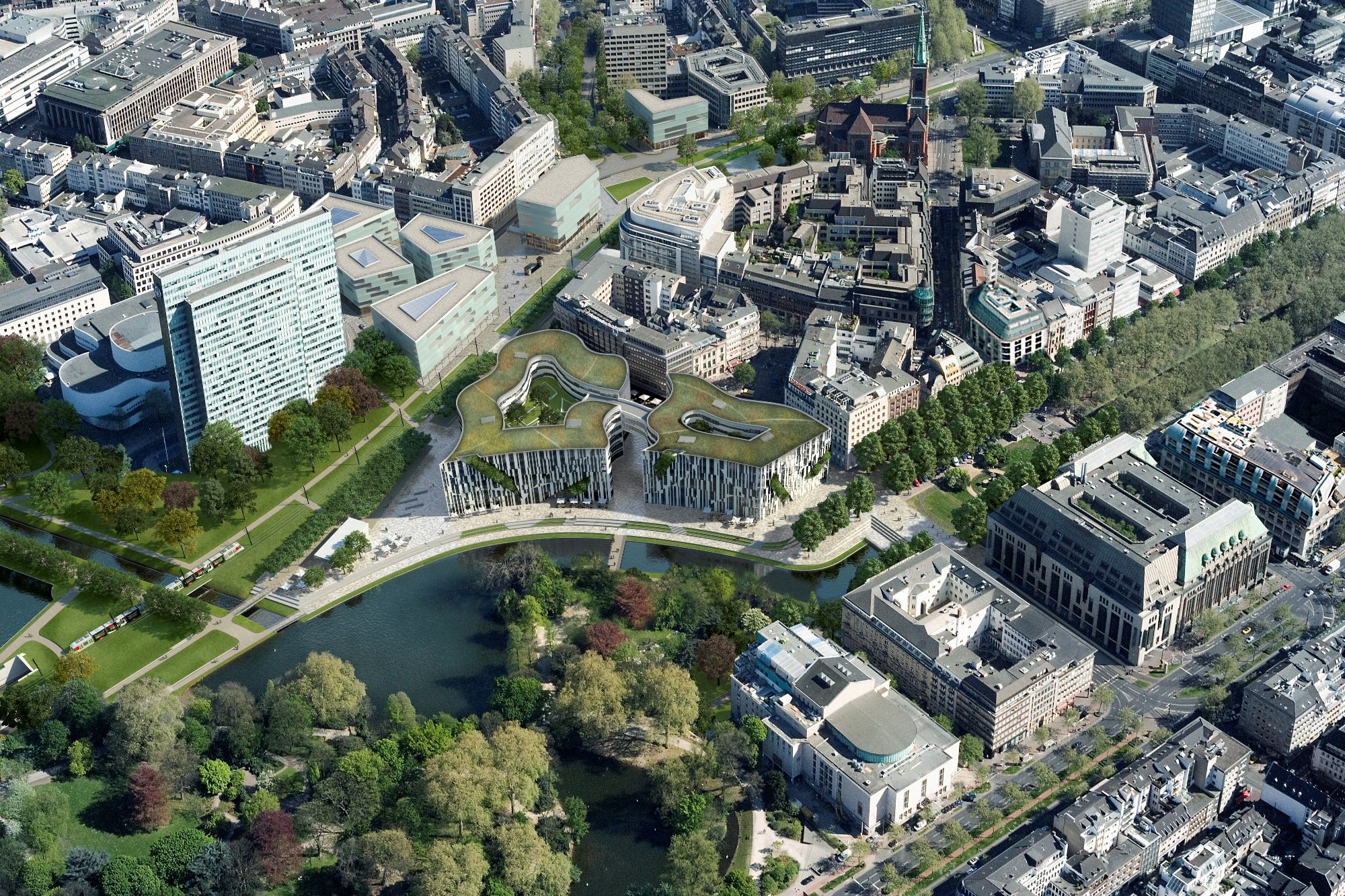Düsseldorf's Kö-Bogen is a feast for the eyes, and not just because of its elegant shops. The employees in the offices above also appreciate the green courtyards in the two buildings, so-called green roofs with an amazing variety of plants, beetles, insects and birds. The green roofs were constructed on a highly pressure-resistant and dimensionally stable thermal insulation of the underlying reinforced concrete ceiling. Mineral insulation boards from Multipor were used, which could be optimally adapted to the amorphous building geometry. More and more building owners and architects are creating additional added value for people and nature in the context of new buildings or roof renovations. The French parliament recently passed a new law to this effect. According to it, all new commercial buildings must in future be at least partially equipped with green roofs or solar collectors.
Green roofs bring back biodiversity
Whether as a small flat roof with extensive greenery or as a garden full of perennials and shrubs: compared to the classic flat roof, green roofs have many advantages. The first one can be seen and heard. Here it hums and buzzes. Microorganisms, bees, butterflies and beetles nest here. They don't even need much space to do so.
Scientists from the University of Zurich were therefore amazed during a study in May 2022. On behalf of the city of Hamburg, they examined seven green roofs in the Hanseatic city. Already there, they registered 235 different species of beetles, many wasps and wild bees. They even found beetles that are on the Red List of endangered species. As food, these insects and beetles in turn attract birds. So the scientists also discovered breeding gulls, oyster catchers and ducks on the only seven roofs.

